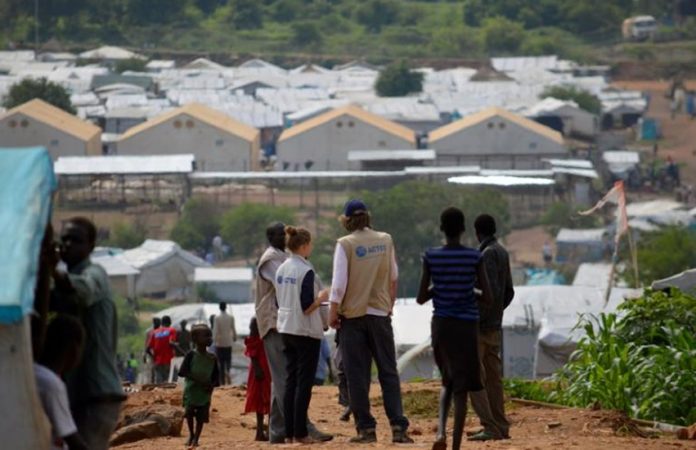There’s something about trekking and climbing through the thick jungle up the side of a volcano — the Green, the mist, the mud, the forest thickness and muttonhead in front who keeps whipping jungle cane into your face — that makes it hard to imagine a gorilla indoors. Because though the Virunga volcanoes straddle the border of three countries — Rwanda, Uganda and the Democratic Republic of Congo — wherever you make the Rwanda Gorilla trip to see the world’s last species of mountain gorillas, it requires a hell hike: a 45-degree slope, torrential rain, thick forest, and almost no path, but when you realize you are on a gorilla safari adventure you keep going.
But time will come on your trek, probably long after your imagined breaking point, when your assigned guide stops and crouches — and your life will never be the same again. Ten years ago, The first time i was on a gorilla safari as a backpacker in Rwanda, our guide positioned us just below a family group of gorillas on a steep hill. Within few seconds, these animals were on us. With a loud crash, a silverback male walked into our small clearing, stood on his stubby legs and furiously drummed his giant chest. The guide pretended to eat grass, I copied and, the matter of who was Lord of the Jungle settled to our Kong’s satisfaction, he pirouetted on his hand-feet, crashed into a bush and fell asleep, leaving us to spend an hour watching his wives and children jumping on his chest and falling out of trees.
On my return to the Virungas a year ago, it was to Rwanda again. This time the trek was so extreme that a day later my entire body went into a spasm from which only an injection of morphine back in the capital Kigali could rescue it. But once again, the toughness of the Gorilla trek was forgotten the moment we encountered the Rwanda gorillas. While watching a mother and her child for a few minutes, a noise behind us told us we had inadvertently sat down between the group and a lone adult male (Silverback). Once he emerged from the bush, we could see the gorilla (large, but not the alpha this time) had lost a hand to a poacher’s snare. That might have accelerated a deep hatred of people. Instead, we just annoyed him. Twice he tried to shove past us before giving up, sitting back on his giant haunches and sighing impatiently.
The Silver Back Gorilla, leader of the Family Group
It is the mountain gorillas’ begrudging tolerance of your presence that it is so extraordinary. It opens up the deepest of all connections, a link that reaches across millions of years of evolution but still feels something like we are a family. Looking direct and unblinking back into your eyes, apparently with the same half-recognition and understanding, is our cousin species, with whom we share a common ancestor and 98% of our DNA.
And for all our sophistication; language, clothes, smoking, flashy cameras; there’s no mistaking who’s more impressed. Not that it’s difficult to become depressed about mankind in these parts. Rwanda was where more than 1,000,000 people were slaughtered in 1994 Rwanda genocide when majority Hutus turned on minority Tutsis and their suspected Hutu supporters. That holocaust sowed the seeds of a war in neighboring Congo which eventually sucked in nine African countries and plunged a vast and barely functioning nation into a bloody chaos from which it is slowly recovering.
It was during the wars in Congo side that marauding militias would kill gorillas to eat as meat, or sell their hands and feet as ornaments, or steal their children to sell to illegal animal collectors. But by then, the gorillas had human friends as well as enemies, geologists like Dian Fossey, the American conservationist who befriended them in the 1960s and was killed for her efforts at her Virunga research station in 1985, or the gorilla trackers, who stick with one family group throughout their career. Today, there is hope the environmentalists are prevailing. Under constant watch, the Rwandan gorilla population is growing. Over the border in Congo, the Tayna lowland gorilla reserve is host to a university dedicated to their conservation. Still, with numbers of mountain and lowland gorillas in the low hundreds, extinction remains a real threat. That, as greens and gorilla groupies tend to put it, is the elephant in the room.


